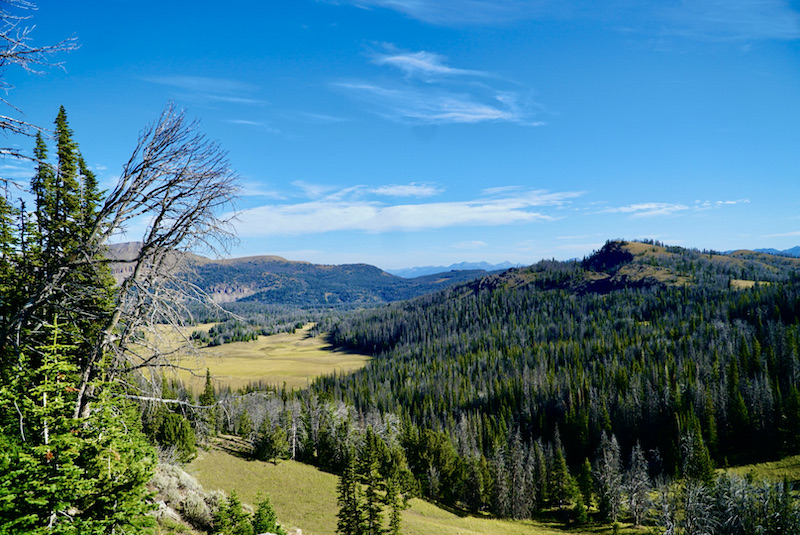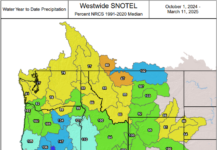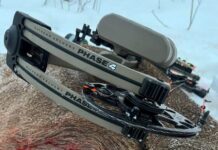
There’s nothing I’d rather do than run the mountains chasing elk in September with my bow in hand. Elk hunting is the reason I work on my fitness every day. It’s the reason why I’ve invested so much time in my craft as an archer. It’s the reason why I have been pouring over maps since December. At this point, it’s hard to even imagine not spending vacation time each fall with my truck pointed west. But there is one other thing that is constantly on my mind as I spend my time preparing. My life with Type 1 diabetes.
Backpack Hunting with Diabetes
Since I was diagnosed as an eighteen-year-old kid getting ready to move off to college, I’ve never let my diabetes diagnosis be a limiting factor. In fact, it has been sort of the opposite as I now work as a physician assistant in diabetes and endocrinology in my professional life. But I’ve always known with some hard work and a little preparation, I could do whatever I wanted to do. Running marathons, backpacking the Appalachian trail, or hunting the mountains of the West; no task would be too tall. Like many of my fellow Roksliders, I landed on hunting the West.

Preparation is Key
The crucial piece to good blood sugar control on a hunt is preparation for the hunt long in advance. As I previously mentioned, I train daily for not only the fitness aspect of mountain hunting but also to prepare for how my blood sugars are going to respond. Each session is an opportunity to further gauge how my blood sugars will react to strenuous exercise. With plenty of trial and error, I know I need about 50 to 60 percent of my normal insulin requirements during a hunt.
Set a Target With Your Doctor
As a general rule, a person’s insulin needs will end up being about 50 percent of the usual requirement, secondary to extended periods of exertion. Keep in mind, this is just a starting point. I also know that if I change my target blood sugar from 100 to 150 or 160, I will give myself enough of a buffer to avoid low blood sugars secondary to exercise. This can be a bit of a delicate balance as I also do not want my blood sugars to run too high either, but I know the lows are more dangerous immediately and are always in the forefront of my mind. Be sure to work with a provider ahead of time to make a baseline plan.
Also take the time to figure out a target blood glucose range and the needed basal rate ahead of time. I admittedly was not great about this on my first hunt in 2017, but luckily was able to adjust relatively well on the fly. That hunt did, however, show me that I needed a better plan moving forward.
Training Hikes
Now each training session or ruck with my pack is another opportunity to plan and see how my blood sugar responds. Load up a pack with 40 pounds and go for a long hike. Perform exercises routinely with your heart rate in various ranges. These will all be opportunities to see how blood sugars are going to respond, how many carbs are needed beforehand, and how many carbs may be needed over an extended period of exercise to keep blood sugars in a reasonable range. All of this information will help build a suitable plan for the mountains.
When it comes to exercise and extended periods of exertion, I have no problem preparing in my home state of Michigan. Altitude can still be the great equalizer when it comes to blood glucose control and is nearly impossible to prepare for as a flatlander.
Elevation Can Play a Roll
In general, just being at a higher altitude can increase insulin requirements and raise blood glucose levels. So far for myself, I have not experienced an increase in overall insulin needs due to increased altitude. Exercise seems to keep my blood sugars fairly balanced, and I still find myself mostly hovering around 50% less insulin use when compared to my normal day-to-day routine. To combat this some, I highly recommend giving time to acclimate to altitude when coming from outside the West. Come in a day early and sleep at a lower altitude than the planned hunt area. Take some extra time getting up the mountain the first day. Just a few days of acclimation can go a long way in estimating insulin requirements and adjusting on the fly as needed.

Technology Helps When Hunting With Diabetes
It sounds weird to say, but if there was ever a time to be a diabetic, now is probably the time. Technology has quickly advanced over even the last 10 years, and we’re as close now to a true “artificial pancreas” as we ever have been. Multiple pump companies offer a closed-loop hybrid system now, which makes dynamic adjustments to blood sugars far more attainable.
An important piece to the puzzle is a continuous glucose monitor. I cannot stress enough how important this piece of equipment is to my ability to hunt the mountains each year without worry. These devices are generally worn for 10 to 14 days and not only update blood sugars every 5 minutes, but also give alarms to upcoming high and low blood sugars. Within these closed-loop hybrid systems, the CGM and insulin pump are continually communicating, and insulin rates are adjusted as needed depending on current blood sugar trends and future projections. Talk about a game-changer for the diabetic outdoorsman.
Simple Checks Can Work Too
That’s not to say someone utilizing insulin injections and regular finger stick blood sugar checks cannot hunt the mountains either, because they certainly can. It will likely just take more time in terms of monitoring blood sugar levels manually. As I’ve mentioned before, there are many good options available now in terms of pump therapy.
My Gear
I’m currently using a Dexcom G6 CGM and OmniPod insulin pump. With these two devices, I can run an app I built on my phone known as LOOP. This allows me full control of my settings, target blood sugars, and boluses right from my phone. I am also using a Garmin Instinct Solar watch that displays my Dexcom high and low blood sugar alarms, allowing me ample time to respond before a low blood sugar occurs. My blood sugars are quite literally always just a click of my phone or a glance at my watch away.

Proper Food Is Important
As always, food in the backcountry is an important consideration. As far as blood sugar control goes, I’ve found staying lower carbohydrate and higher protein overall during the day keeps my blood sugars more stable and avoids lows. I will usually aim for 25 to 50 carbohydrates total for breakfast and lunch. I can generally get away with not blousing for breakfast and may only bolus for about half of my lunch. This is not an exact science, so experiment with this ahead of time. My snacks will generally be in that 10 to 25 carbs range as well, with protein sources being a common option.
Dinner
For dinner, I know my day is done and I won’t have to worry so much about exercise-induced low blood sugars due to the amount of insulin I have on board. Lately, my go-to has been a Peak Refuel meal that may be anywhere from 45 to 60 carbs total. Depending on where my blood sugar is at the time and how many miles we have put on that day, I usually bolus for about ¾.
Glucose Tabs
In terms of treating and avoiding lows, I’ve found glucose tabs in my waistbelt pouch work extremely well. They’re around 4 carbs each, and I know if my Dexcom shows I am trending down, I can use 4 to 5 and usually keep on hiking. If I do see a double arrow down, meaning my glucose could fall by >90 mg/dL over the next 30 minutes, I know that I need to stop and wait a bit after treatment. I’ll also add a small protein source after the glucose to prevent a rebound low as fast-acting glucose is burned off quickly.
There are plenty of options in terms of fast-acting carbs. Other common options are glucose gel, skittles, or essentially any other candy. A Garmin inReach is another tool I always carry with me in the event of an emergency, and I cannot recommend it enough. I hope to never need it, but I wouldn’t leave the truck without it now.
Packing Insulin
Insulin storage at altitude is often overlooked when planning for a backcountry hunt. Keep in mind that insulin pens and vials alike should avoid extremes of both cold and heat. In the past, I have slept with my insulin vials in the pockets of my puffy jacket to keep them warm. While this has worked well in the past, this year I plan on trying a case I recently found from CaseMD. These insulated vacuum-sealed cylinders will likely give a bit more protection to my insulin vials, as well as better temperature regulation.
Good Hunting Partner Is Important
A final variable to consider is finding the right hunting partner. It’s vital to not only find someone you can hunt and co-exist with in the backcountry for extended periods, but also someone that will be willing to help if something blood sugar-related in the field goes awry. A good hunting partner can make or break a backcountry hunt, but this can be especially true if a diabetic emergency were to arise.
I do my best to prepare in order to avoid these situations entirely. However, as I can attest to, no matter how well one may prepare, things may still inevitably happen, and it is important to hunt with someone who will adjust with you as needed. That may mean stopping for a few minutes for some glucose tabs as you’re moving in on a fired-up herd bull, or maybe lingering a little longer in the morning to get going up the trail waiting for blood sugars to stabilize.
Luckily for me, I’ve had the same hunting partner ever since I was a little kid. He’s the kind of person that would give me the shirt off his back, so I never have to worry about where his head is at in the mountains or if he will be willing to help out if needed.

Conclusion
Hunting the mountains of the West, specifically for elk, has become a huge part of my life. Diabetes brings about another variable to consider, but it is far from a hurdle. Take the time to prepare. Simulate exercise ahead of time as much as possible to formulate a plan. Be intentional with food planning and set realistic expectations. But most importantly, just go enjoy it.
You can comment on this article or ask Cody questions here.
Click here for more nutrition and fitness content.















